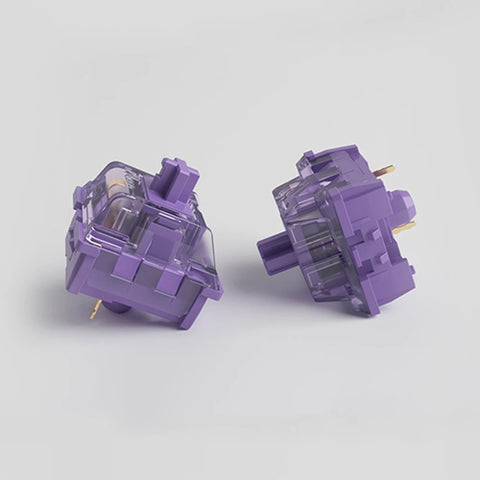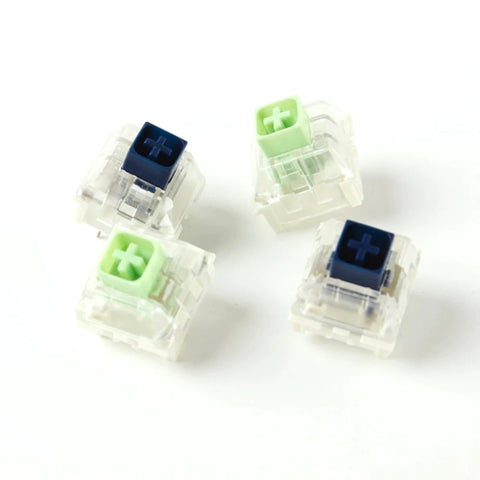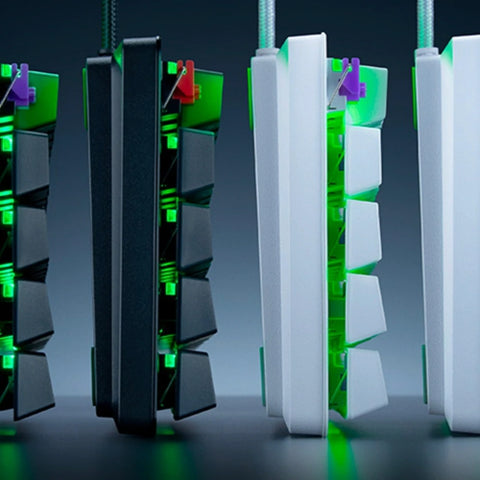Optical Vs Mechanical Keyboard Switches: Our Take!!
Mechanical keyboards especially gaming keyboards are now getting a new type of switch profile called the Optical-Mechanical switches. So how different are these Optical Switches in comparison to the standard mechanical switches that we have? These are being advertised as having faster response time and better lifespan with improved durability. In today’s blog let’s dive into the world of switches and have a comparison between both the Optical and Mechanical switches. Without any further ado, let’s begin.

What is a Mechanical Switch?
On a mechanical keyboard, each key has its own switch underneath which gets activated every time we press them. These switches consist of a housing, a spring, a stem, and some other parts like the click bars. They are joined on the keyboard frame using stabilizers. Each time we press any key, the mechanism gets activated with the stem traveling down and registering the keypress when it reaches the actuation point. There are a variety of switches available in the market today from different brands including Gateron, Cherry MX, Kailh, and more. Mechanical switches come in different profiles too, like Linear, Tactile, Click, and more.

What is an Optical Mechanical Switch?
Optical mechanical switches are also mechanical switches but instead of using a fully mechanical system, they use infrared light to register keystrokes. Each optical switch uses light induction to register the keystrokes which make these faster than a standard mechanical switch. When any key is pressed and it reaches a certain point, the light from inside the PCB will hit the sensor and register the keypress. They provide faster response time and are usually smooth and linear in nature. This makes them an ideal choice for gaming as faster response time gives you an edge in competitive games like CS Go, Valorant, Battle Royal, and more.
How Does An Optical and A Mechanical Switch Work?
As we just stated earlier, an optical-mechanical switch registers our keypress with the help of light induction technology. Whenever a key is pressed, the mechanism goes past a certain point and hits the light from the PCB, it registers the keypress. Now we all know the speed with which light travels is pretty fast. So, Optical Switches are usually very fast when it comes to response time.

On the other hand, in a mechanical switch, each keypress gets registered when the stem touches the electrical plate with direct contact. When we press any key, the stem in the mechanical switches starts its travel. When it reaches its actuation point, the stem actually touches the plate, hence registering the keystroke. Since they have a complete work mechanism with physical contact better the switch and the electrical plate, they tend to have a better typing feel but with a slower response time than the Optical Switches.
Optical Vs Mechanical Switch, How To Choose?
There are certain things that we follow while deciding on our next keyboard switch, things as actual feel, sound, response, and durability. Both the Optical and Mechanical Switches have their pros and cons when it comes to the before mentioned points. Mechanical switches will have a better feel with more profile options while optical switches will have better response time and durability. Let’s begin with their comparisons.
Switch Feel & Feedback:-
For any keyboard enthusiast or just a regular buyer, a mechanical keyboard has a feel of its own with the type of switches used on it. Mechanical Switches come in multiple profiles like Cherry Red having linear feedback, Cherry Brown having a tactile feel, and Cherry Blues having a clicky feel with each keypress. What this means is that linear switches have a smooth stem travel with a quieter sound upon reaching the actuation point. Tactile switches have a slight bump upon reaching the actuation point, and the Clicky Switches have a bump and a clicky sound upon reaching the actuation point. We as a user have our own preferences for keyboard switches, some like Clicky ones while some prefer the linear, quiet red switches. Mechanical Switches provide us with all these different options with a wide variety of switches available in the market.

Optical mechanical switches, since there is no contact between the stem and the electrical plate, they mostly have a linear and hollow feel to them. The feedback and feel are better on the mechanical switches. Although we must add, Mechanical switches are here for a long time and we have a wide variety of options available on them, Optical switches are fairly new and have lesser options in the market to choose from.
Sound:-
How does a switch sound? This also plays an important role when deciding on our next Keyboard switch. Some people like the quiet approach with linear red switches, while some love the clicky presentation of the Blue switches. All of this is available with the Mechanical Switches. In the case of optical switches, since there is no actual contact between the key and the electrical plate, they sound a little bit hollow and empty. That’s another place where Mechanical switches provide more options to the end-user.
Response time:-
Now when it comes to response time with the switches, Optical switches leap ahead of mechanical switches with faster response time. This is achieved based on the speed of light principle. We all know light travels at a very fast speed and the principle behind the working of optical switches includes hitting the light only. Optical switches provide a faster response time in comparison to standard mechanical switches. This makes them an ideal choice for professional gaming keyboards as they need to bring that fast key registration benefit in competitive games.

Durability & Lifespan:-
In optical switches, there is less physical contact involved inside the switch mechanism. This makes them have less wear and tear compared to the standard mechanical switches increasing their durability and life span. A Mechanical switch has a life span of anywhere around 50 million keystrokes, while an optical-mechanical switch has a life span of 100 million keystrokes making them a better choice here.
Final Words:-
Well, this closes the comparison between an optical and mechanical switch. Each of them has its own benefits and cons, like Optical ones will have better durability and response time while a standard mechanical switch will offer us a better feel and sound. Now the decision is up to us to decide what we want in our next keyboard? I guess the picture clears once we decide on our use case, if we are into gaming and need faster response time, Optical Switches are the way to go, and if we want a clicky keyboard for typing, a keyboard with Blue switches will be a better option. We sincerely hope we were able to help you out with this guide on Optical Switches. If you have any further questions, feel free to write to us at support@mechkeys.com.
























![LAMZU ATLANTIS MINI [Champion Edition]](http://mechkeys.com/cdn/shop/files/7cb005aab81ef6fda0239afa4820e9ab_360x.png?v=1766123828)
![LAMZU ATLANTIS MINI [Champion Edition]](http://mechkeys.com/cdn/shop/files/cb77a7a6514a08c9a0e96fa1d4e628d2_360x.jpg?v=1766123813)














